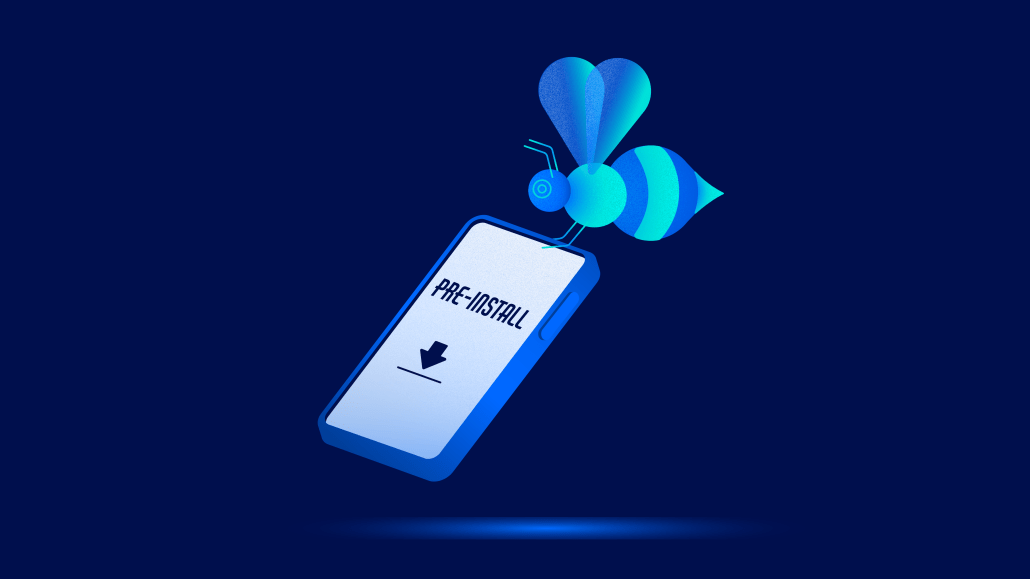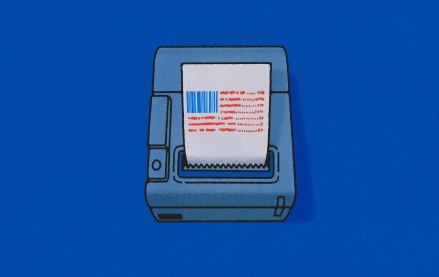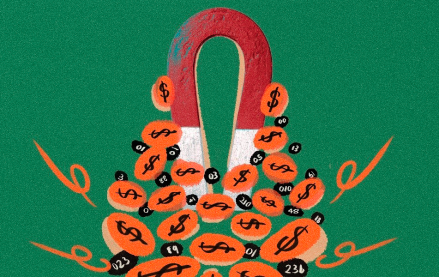How beelining for the app setup process is the advertiser opportunity marketers are missing

Sponsored by AdColony
While the first challenge for app developers — and marketers — in the app install game is creating apps that people love and want to use every day, the crucial next step is distribution and creating opportunities for user discovery.
Discovery methods sit in two main buckets — organic and paid user acquisition. The first is generally achieved by being featured in app stores, while the latter presents a broader range of options for reaching new users, including ad networks and on-device advertising, a channel that most UA marketers have until recently underutilized.
“Being on-device gives you the front-row seat to reach that consumer at the most intimate moment — the most opportune time — and get your brand right in front of them on day one,” said Matt Gillis, president of on-device solutions at Digital Turbine.
Many advertisers may not know that it is possible to become a part of the setup process with carriers and be one of the apps installed on those carrier-provided devices. Having a channel to reach consumers from unboxing to daily moments, including a device’s notifications, is a crucial step for all app advertisers.
Why on-device advertising is an important step for brands and advertisers
On-device advertising is essential as an evergreen strategy for growing a user base, but it’s also a powerful way to take advantage of new device launches if done right.
Ad position: web_incontent_pos1
For example, in the upcoming launch of the Samsung Galaxy S22 line of devices lies an opportunity to tap into the energy of something new and very much anticipated.
“When a flagship device like that is launching, there’s going to be pent-up demand,” said Gillis. “Here’s your opportunity to make sure that your brand is the first thing they see when they turn on that device and to be that user’s app of choice for the lifecycle of their device, which is usually about two years. ”
The longer advertisers wait, the greater the risk of missing out on new users. Trying to reach a consumer a year after they’ve had a new device isn’t ideal — they’ve already created their behaviors and identified their favorite apps.
“Think of it this way,” Gillis continued. “Let’s say you’re AccuWeather — users aren’t going to choose five other weather apps; they’ll choose one. If you’re the first app that lands on the device, then you’ve made it so easy for that person to say, ‘My weather source is now going to be AccuWeather.’ There’s an opportunity to be that first app that people choose and have become a part of their daily ritual.”
Using the setup process to drive customer acquisition
Ad position: web_incontent_pos2
As publishers and brands approach on-device advertising as a core piece of their customer acquisition journey, there is room for different tactics based on established goals.
“You can go as big as you want and reach 750 million devices or narrowly focus,” said Gillis. “For instance, a social media network came to us wanting to work on targeting Latin American devices to drive install and engagement in that region. You may also see folks put their flagship app onto a device and use that to cross-promote the rest of the suite of apps they have in their portfolio.”
While the main focus for many is becoming one of the pre-installed apps on carrier devices, it’s not the only form of on-device advertising. It’s an excellent moment for advertisers to test and iterate — figuring out what works best for them and their brand.
“We’ve had a quick-service restaurant come to us and say they’re doing a Super Bowl commercial and that they’re doing all these other things to surround a launch of something unique,” Gillis said. “They’re testing and iterating on things like notifications, pre-installs or being a part of the wizards and setup process. If you’re a brand, on-device is another awesome tool in the toolbox to use to surround the user with your message.”
And on-device advertising isn’t just a customer acquisition strategy; it’s an avenue for retention and engagement, too.
“There may be an app that was installed onto a device that a person either hasn’t opened yet or they haven’t used it in a certain period of time, which is perfect for notifications to drive re-engagement,” Gillis said. “They can help drive users back to the app to try to capture their attention and create engagement. There are also ‘wizard’ opportunities where you can intuitively suggest new apps to users.”
Identifying the right partner to expand reach and nail placements
While faster networks and more sophisticated devices are powering advertising success stories across industries, app discovery is still a challenge, and so is getting access to devices and carriers.
Developers seeking campaigns directly with a Verizon or an AT&T may be unaccustomed to how long the technical and legal due diligence procedures for a carrier or device manufacturer might be. All this complexity means app developers and advertisers are turning to partners to help them work through getting onto devices. Partners with existing, integrated technology and business agreements can speed campaigns through and also give access to multiple carriers at once.
Essential characteristics and questions to ask of an on-device partner that can fulfill these needs include the following.
- Scale and massive reach: How many devices, what types, and what geographies can they access?
- Road-tested: How many discovery experiences do they offer and with how many carriers do they work? Carriers don’t just put any software on their devices.
- Quality: Can they deliver quality users and quality engagement?
- End-to-end platform: Is each part of the customer journey, from discovery to monetization and more, a part of the same platform?
On-device advertising is one of the best-kept secrets in UA. As it grows, it’s becoming a valuable inventory source for app advertisers and a core element of the customer acquisition journey. This tactic aids advertisers in discovery as well as retention and monetization. It is both evergreen and something that can be easily amped up to surround new device releases. Finding the right partner to help navigate these different placement options can make one aspect of what can be a turbulent industry more accessible and more successful, no matter the devices and carriers to come.
Sponsored By: AdColony
More from Digiday
Sliders test article
Amazon bulldozes into new markets, upending the status quo and challenging rivals. Today, it’s the turn of the ad-supported streaming world, and Amazon is coming out of the gate strong. Why, you ask? Because Amazon is serving marketers an opportunity beginning today to reach a whopping 115 million monthly viewers in the U.S. alone, courtesy […]

How CTV and DOOH are growing this political season for smaller agencies
Connected TV and digital out-of-home are playing a bigger role in upcoming elections and politics – especially for smaller agencies looking to place clients’ dollars.

CMO Strategies: Advertisers identify the top attributes on ad-supported streaming platforms
This is the third installment in Digiday’s multi-part series covering the top ad-supported streaming services and part of Digiday’s CMO Strategies series. In this report, we examine which ad attributes matter the most to marketers on streaming platforms.
Ad position: web_bfu